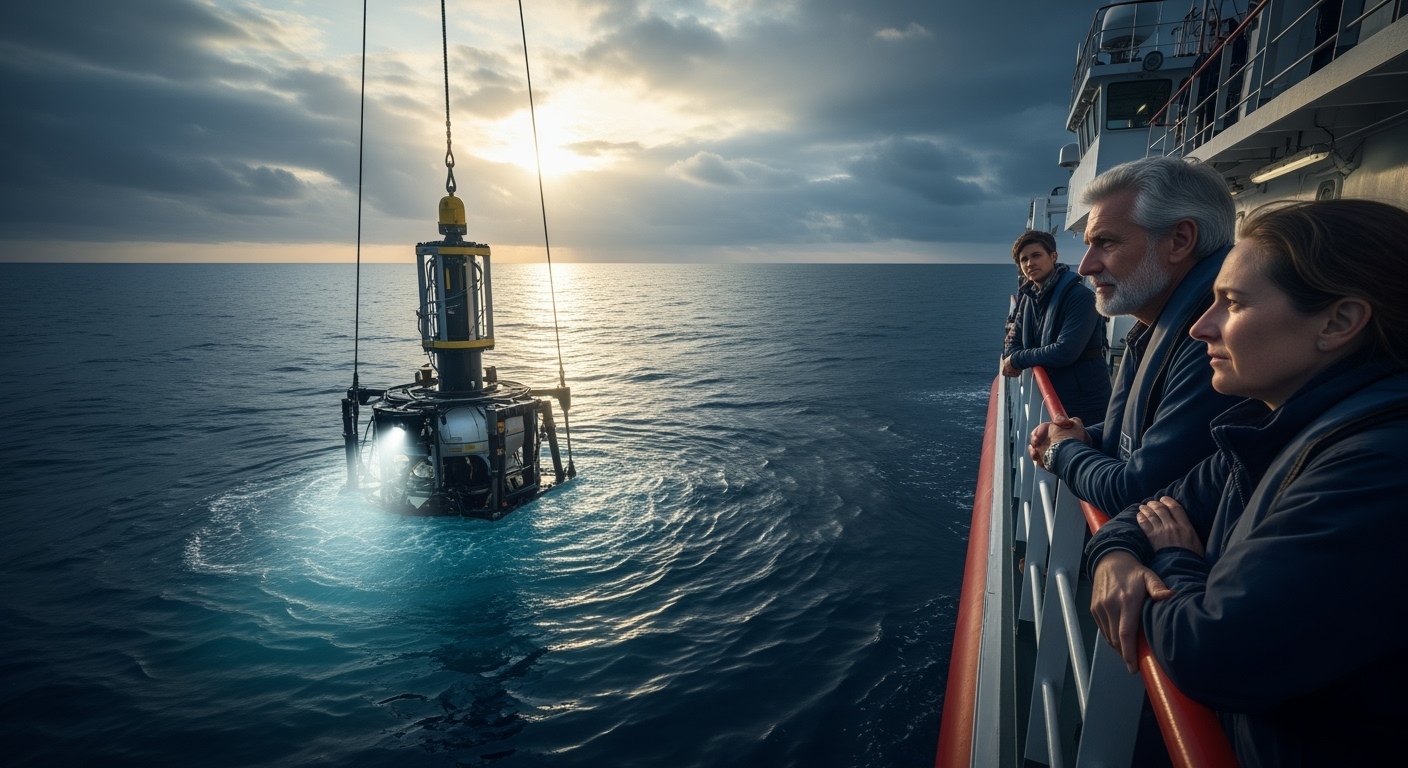Related Articles

The Hidden Danger: Unraveling the Complex Link Between Talc, Asbestos, and Cancer

The Hidden Sleep Divide: Why Women May Need More Rest Than Men





Humanity stands on the cusp of an unprecedented achievement: the complete mapping of the global ocean floor. Driven by initiatives like the Nippon Foundation-GEBCO Seabed 2030 project, which aims to chart the entirety of the seabed by the close of the decade, this monumental undertaking promises to unveil the mysteries of more than 70% of our planet that currently remains largely unknown. In 2017, only 6% of the ocean floor was mapped to modern standards, a figure that has since risen to approximately 27.3% as of World Hydrography Day 2025. While this quest for knowledge offers unparalleled opportunities for scientific discovery, resource management, and safety, it simultaneously raises profound questions about the potential for environmental exploitation and geopolitical tensions, making it a venture that could be both a blessing and a curse for the future of our planet.
For centuries, the ocean depths have remained Earth's most enigmatic and inaccessible realm. Scientists often quip that we know more about the surfaces of the Moon and Mars than we do about our own planet's seafloor. This vast expanse, covering over two-thirds of the globe, has historically defied comprehensive mapping due to immense pressures, perpetual darkness, sheer scale, and the prohibitive costs associated with deep-sea exploration. Despite the ocean's fundamental role in sustaining life, regulating climate, and providing resources, an estimated 80% of the ocean's sub-surface remains unmapped, unobserved, and unexplored to modern standards.
The urgency to fill this critical knowledge gap has spurred international collaboration. The Nippon Foundation-GEBCO Seabed 2030 Project, launched in 2017, is a global initiative committed to compiling all existing and newly acquired bathymetric data into a high-resolution, openly available digital map of the entire ocean floor by 2030. This project is a flagship program of the UN Decade of Ocean Science for Sustainable Development, emphasizing its critical role in understanding and sustainably managing the marine environment.
The potential advantages of a fully mapped ocean floor are extensive and transformative. Accurate bathymetric data provides foundational insights across numerous critical domains.
Scientific Advancement and Climate Understanding: A detailed map of the seabed is crucial for understanding fundamental ocean processes. It enables better modeling of ocean circulation, which in turn improves climate predictions and our understanding of how oceans regulate Earth's temperature and absorb carbon. Such maps are vital for identifying unknown marine ecosystems, tracking marine biodiversity, and studying deep-sea life, much of which remains undiscovered. Mapping can also help predict and mitigate natural disasters like tsunamis, earthquakes, and volcanic eruptions by providing insights into tectonic plate movements and geological fault lines. Understanding the seafloor topography aids in predicting coastal inundation and storm surges, allowing communities to better prepare for rising sea levels.
Safety, Navigation, and Infrastructure: For maritime activities, accurate seafloor maps are indispensable. They ensure safe navigation for global shipping, facilitating trade and supply chains by identifying obstructions and optimal routes. Beyond navigation, this data is critical for the strategic placement and maintenance of vital undersea infrastructure, such as telecommunication cables that connect continents, reducing the risk of damage from geological activity.
Sustainable Resource Management and Economic Growth: The "Blue Economy," encompassing industries like fisheries, aquaculture, renewable energy, and tourism, stands to benefit significantly. Detailed maps support sustainable fisheries management by identifying crucial habitats and breeding grounds, preventing overexploitation. They are also essential for siting offshore energy installations, such as wind farms and oil and gas platforms, and for identifying suitable areas for aquaculture, ensuring minimal environmental impact and optimal efficiency.
Despite the promises, the drive to map the ocean floor is fraught with risks and ethical dilemmas, raising concerns that this newfound knowledge could become a curse.
The Specter of Deep-Sea Mining: Perhaps the most contentious implication is the acceleration of deep-sea mining. Seafloor maps pinpoint deposits of valuable minerals like polymetallic nodules, cobalt crusts, and sulfides found near hydrothermal vents. Mining these resources could lead to irreversible environmental damage, including extensive habitat destruction, significant biodiversity loss, and the creation of vast sediment plumes that can smother organisms and introduce heavy metals into the water column. The noise pollution from mining operations could also disrupt marine mammals that rely on sound for communication and navigation. Furthermore, deep-sea mining risks disturbing the ocean's role as a carbon sink, potentially impacting global carbon cycling and even releasing methane from seabed sediments, exacerbating climate change. Critics highlight that many deep-sea ecosystems remain poorly understood, making it difficult to assess the full impact of such activities, leading to calls for a precautionary approach or even a moratorium.
Geopolitical and Military Implications: High-resolution seabed maps hold significant strategic value. They can provide navies with critical information for submarine operations, mine countermeasures, and the monitoring of vital undersea infrastructure. Some nations, such as China and the United States, already utilize marine surveys for military applications, blurring the lines between civilian research and national security interests. The availability of detailed bathymetry could intensify geopolitical competition, particularly over access to valuable resources and strategic waterways.
Ethical Concerns and Data Governance: The open accessibility of detailed seafloor data, a core principle of Seabed 2030, presents an ethical quandary. While intended for the common good, it also exposes previously unknown, fragile deep-sea habitats to potential exploitation by industries prioritizing short-term economic gains. Questions of data ownership, equitable benefit-sharing, and the capacity of international bodies like the International Seabed Authority (ISA) to effectively regulate and enforce environmental safeguards for newly accessible areas remain pressing. The environmental cost of the mapping process itself, through fuel consumption and undersea noise, is also a consideration.
Technological advancements, including multibeam sonar, autonomous underwater vehicles (AUVs), and bathymetric lidar, are accelerating the pace of ocean mapping, making the 2030 goal increasingly attainable. However, the journey toward a complete seafloor map demands more than just technological prowess; it requires an equally robust commitment to international cooperation, transparent data sharing, and stringent ethical governance.
The comprehensive mapping of the world's oceans represents humanity's next great frontier of exploration. It offers an unparalleled opportunity to deepen our understanding of Earth's largest ecosystem, enhance global safety, and foster sustainable development. Yet, without careful consideration of its potential downsides, particularly concerning the unchecked exploitation of deep-sea resources and the militarization of the marine environment, this ambitious endeavor risks becoming a Pandora's Box. The ultimate impact of charting the deep will depend on the collective wisdom and resolve of the global community to ensure that this monumental blessing of knowledge does not inadvertently pave the way for an irreversible curse on our planet's most vital, yet fragile, realm.